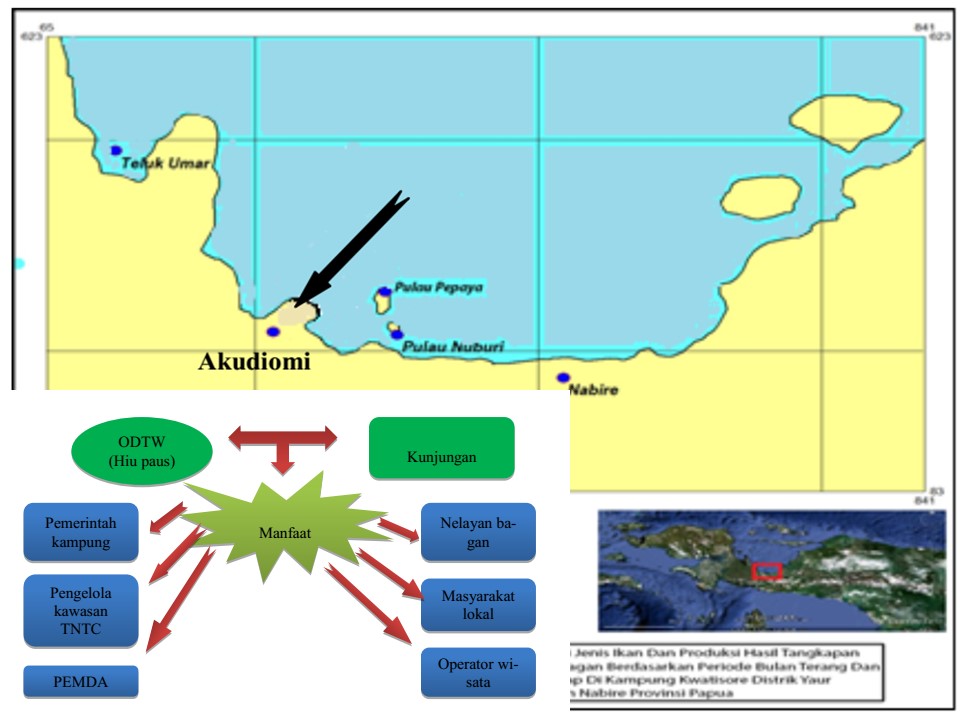Economic Benefit of Whale Shark Tourism in Akudiomi Village, District Yaur, Nabire Regency
DOI:
https://doi.org/10.30862/jsai-fpik-unipa.2017.Vol.1.No.1.25Keywords:
The economic benefits, ecotourism, whale sharks, akuidiomi villageAbstract
Model utilization of whale sharks that benefit the economy as well as providing protection against a whale shark can be done through tourism with the concept of ecotourism. Akudiomi village is one of the villages in the region of Teluk Cenderawasih National Park that has the object and attraction-based whale sharks. Increased tourist arrivals to the region has given economic benefits for all parties. The purpose of this research is to know the economic benefit gained by the stakeholders and in particular to know the welfare of the local travel business operators of whale shark ecotourism activities. The study was conducted from March to May 2014 in Kampung Akudiomi Nabire district of Papua province. The results of the study informs that activity-based ecotourism whale sharks in the waters Akudiomi had a positive impact that is bringing economic benefits to all stakeholders, including local communities. The economic benefits obtained by each party is different, depending on the policies in the tariff, as well as the type of activity and the number of tourist visits. Although it has provided economic benefits, the welfare of the local travel trade is still relatively low (33%) and moderate (67%), the general ability of a per capita income lower than the level of consumption.
Downloads



















